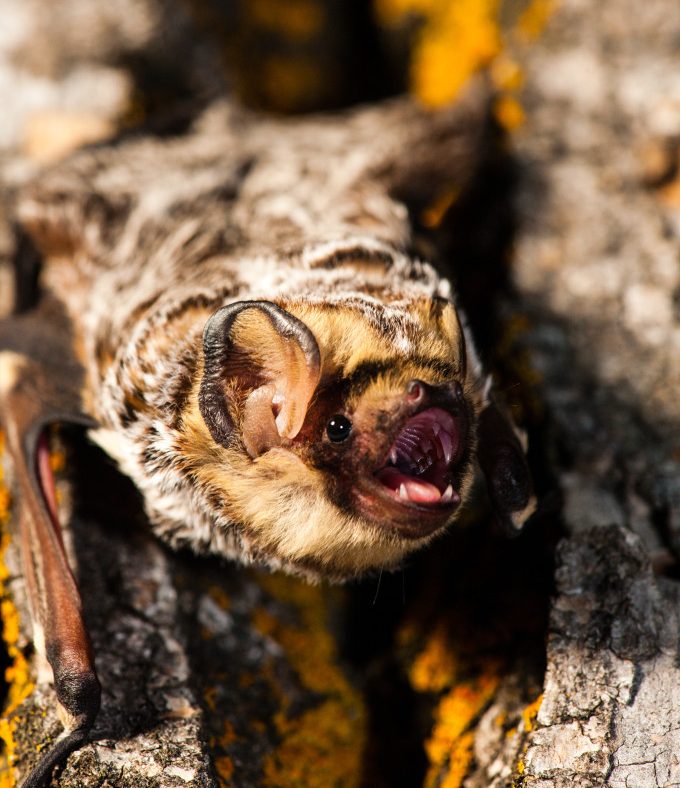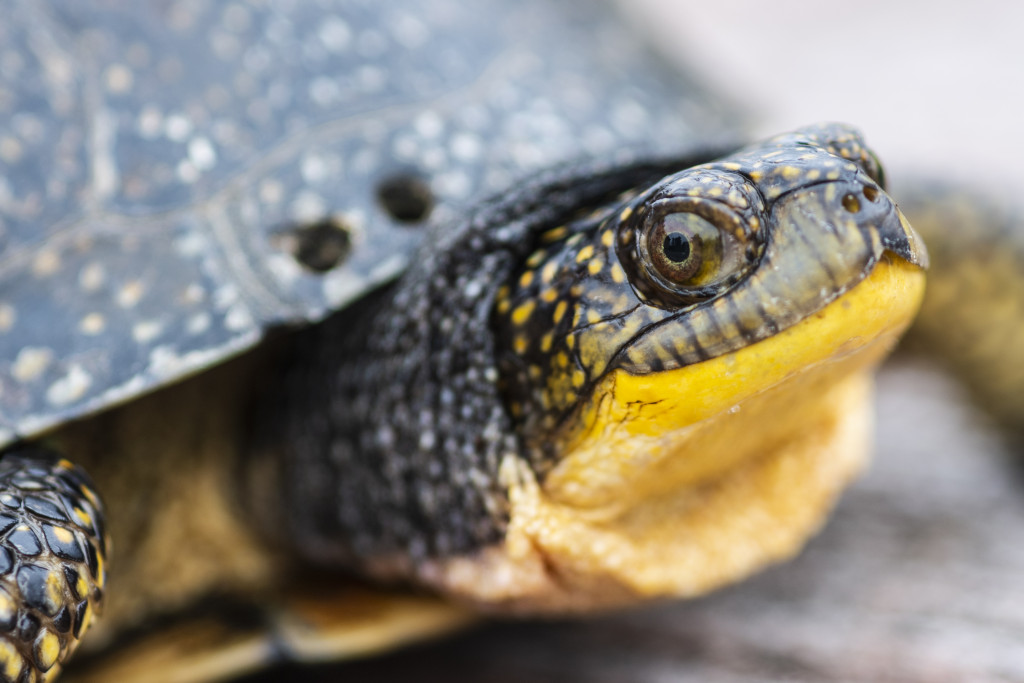
By Monica Macoubrie, Wildlife Education Specialist
“Eyes on the side hide, eyes on the front hunt.”
The size, ability and position of the eyes of animals can vary widely depending on the species, environment and whether the animal is predator or prey. Some animals can move their eyes independently; some can see in ultraviolet light; and others can’t really see much at all. Throughout this article, we will take a closer look into four different types of animal eyes and their uses and functions.
Dragonflies
Dragonflies are often considered the apex predators of the insect world, despite their small size. They have the ability to catch food right out of the air during flight, thanks to their humongous, globular compound eyes. Compared to African lions, which have a capture success rate of 25 percent when pursuing prey, dragonflies are successful about 95 percent of the time.
A dragonfly’s compound eyes cover most of its head, and they can see nearly 360 degrees around them. Two separate eyes come together at the top, and within each eye are smaller lenses. Depending on the species, a dragonfly’s eyes can compose of up to 30,000 facets or little lenses. These compound eyes have a dorsal (upper) region that detects light directly from the sky above and a ventral (bottom) region that collects light reflected off objects on the ground.
Humans, possessing larger brains, have excellent vision. We rely on three opsin genes, or proteins that bind to light-reactive chemicals, that are sensitive to blue, green and red light. Scientists have found that the diversity of opsin genes correlates with the quality of vision in animals. Compared to our three, dragonflies have between 15 and 33 opsin genes. That should give you an indication of how well they can see! Dragonflies can also see more colors than humans, including ultraviolet light.
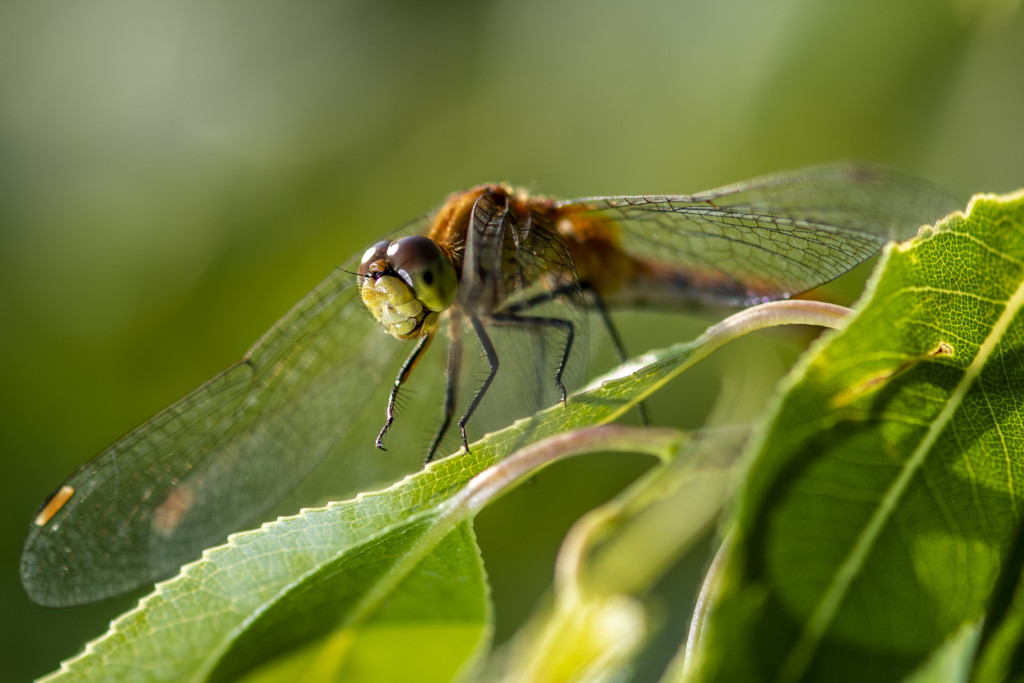
Owls
Not many avian predators can outrank owls in vision. They are considered perfect nocturnal hunters, possessing many of the adaptations needed to excel in stalking prey at night. One characteristic in particular is their eyes.
It is easy to see why owls have been deemed “wise,” as their appearance usually comes from their piercing, intense stare. An owl’s eyes are located facing forward on its head, very similar to humans. This eye arrangement is effective in tracking the movements of potential prey. Owls actually have the most forward-facing eyes out of any group of birds.
Owls have what is known as 3-D or binocular vision, a trait they share with many other predatory animals. This helps with acute depth perception and allows them to gauge distance when planning an attack. These nocturnal hunters also have something known as a nictitating membrane. This is essentially a “third eyelid” located near the horizontal inside corner of each eye. This membrane helps protect their eyes from debris when the owl swoops in to catch prey.
As far as shape, owls don’t really have eye “balls” at all. Their eyes are more elongated, which helps them work more efficiently in low-light situations. Owls have special bony structures known as sclerotic rings to help support these huge eye structures and hold them in place. However, these rings prevent them from moving their eyes — you will never catch an owl rolling its eyes at you. Behind the retina is another layer called the tapetum lucidum, which catches any light that may have passed through the retina and bounces it back to the sensitive rods. All these adaptations add up, and some owl eyes can be as much as 100 times more sensitive to light than human eyes.
The one downside to owls’ eyesight is they tend to be farsighted, making it difficult for them to focus on objects at close range. However, this is balanced by specialized bristle feathers around their beaks, which gives them another way to sense objects close to their faces.
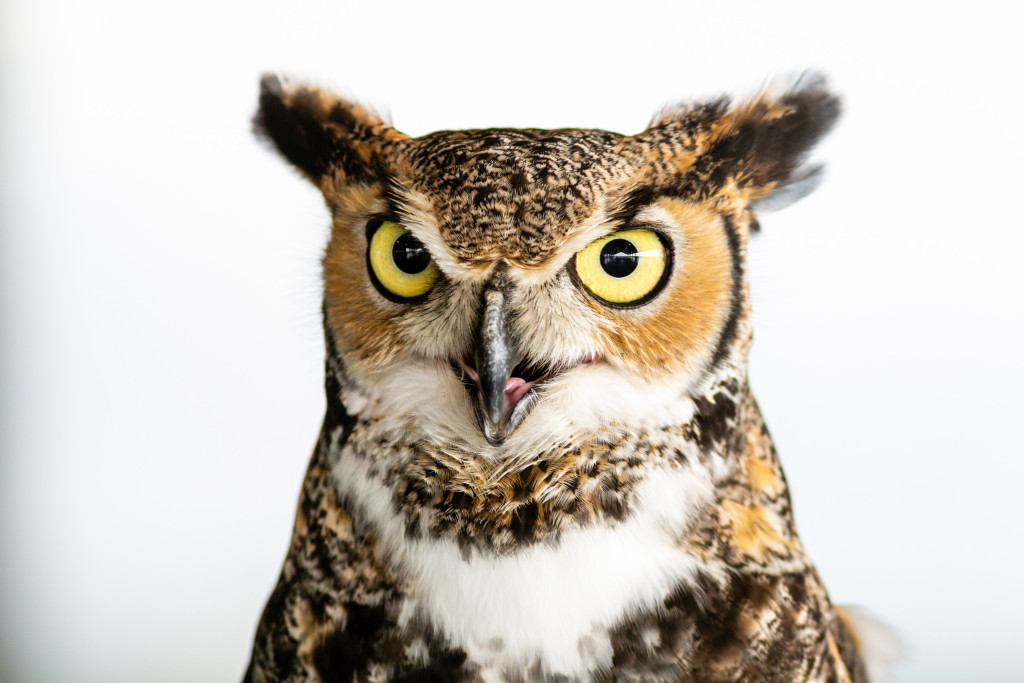
Snakes
In Nebraska, there are 29 species of snakes, and some of these are nocturnal and some of are diurnal, meaning they are awake during the day. New studies have found that snake eyes actually match their lifestyle. Snakes, overall, have a diverse set of rods and cones in their eyes – the specialized cells in the retina that an animal uses to detect light. One adaptation is that snakes have multiple types of visual pigments inside the cones, which allows them to see in color because the pigments are sensitive to different wavelengths of light. So, snakes that hunt during the daytime have lenses in their eyes that block ultraviolet light, which allow them to see clearly in bright conditions – similarly to people wearing sunglasses. Conversely, nocturnal snakes that hunt at night have lenses that allow more UV light in, which help them see in the dark.
An old myth that is still in circulation claims that a snake’s pupil shape can help people determine whether it’s venomous or non-venomous. The myth is that all venomous snakes have elliptical-shaped pupils. Unfortunately, this is inaccurate, as venomous snakes can have elliptical, round or even keyhole-shaped pupils. Therefore, the presence or absence of venom has nothing to do with pupil shape.
If you try to get into a staring contest with a snake, you will never win. That’s because snakes don’t have eyelids, but instead have a nictitating membrane — similar to that of the owl. The cornea on a snake is extremely sensitive, but the clear membrane on the outside provides good protection, and parts of it can be replaced when snakes shed their skin. The thin membrane is not directly on top of the cornea but is separated by a thin layer of fluid that keeps the eye moist. This membrane not only protects the eye, but also helps improve image clarity. The membrane refracts light the same way as contact lenses help people. Scientists believe that further studies on the vision of snakes could potentially provide major advancements in the world of contact lenses.
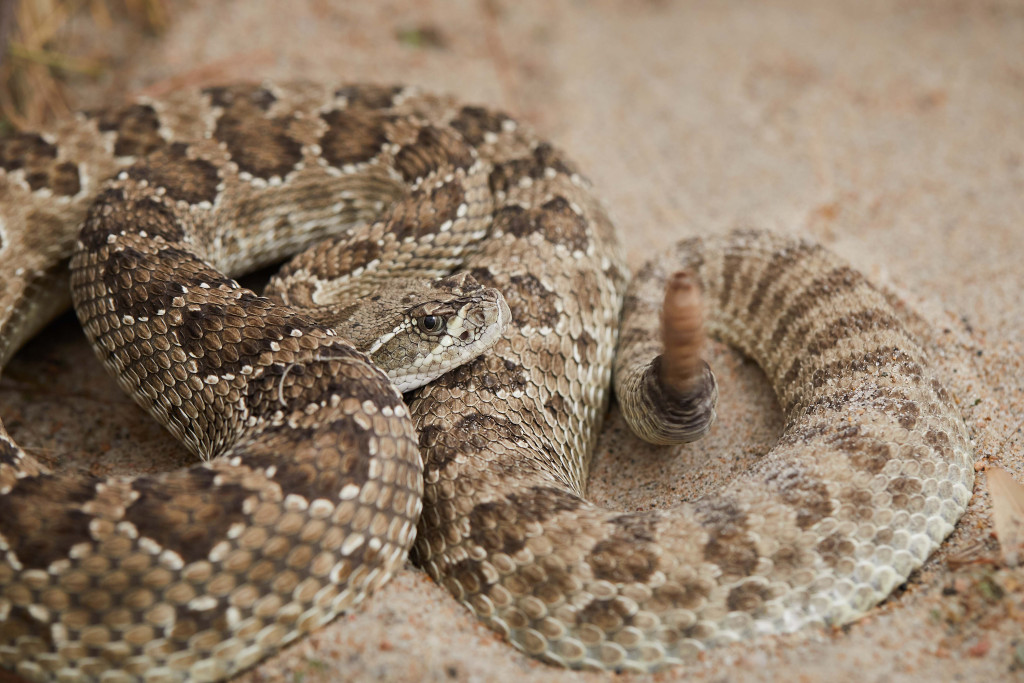
Bats
Contrary to the phrase “blind as a bat,” these flying mammals have extremely sensitive vision, which helps with their nocturnal lifestyle. In Nebraska, the 13 species of bats are known as insectivores, meaning they only eat insects — our bats don’t suck blood, and they don’t eat fruit. To find their food, they have to do it in the dark and often while flying. So, in order to eat, these bats need to have extraordinary eyesight.
In Nebraska, bats also utilize an adaptation known as echolocation, when bats produce sounds which bounce off objects to help them navigate to their food. However, research shows that many bats prefer to use eyesight as opposed to sound when they hunt. These species have particularly sharp vision, and some can even see ultraviolet lights.
A few species of bats can even see in color, thanks to two light-sensitive proteins at the back of their eyes. S-opsin detects blue and ultraviolet light, and L-opsin detects green and red light. Many species of bats are missing one of these proteins and cannot distinguish any colors.
